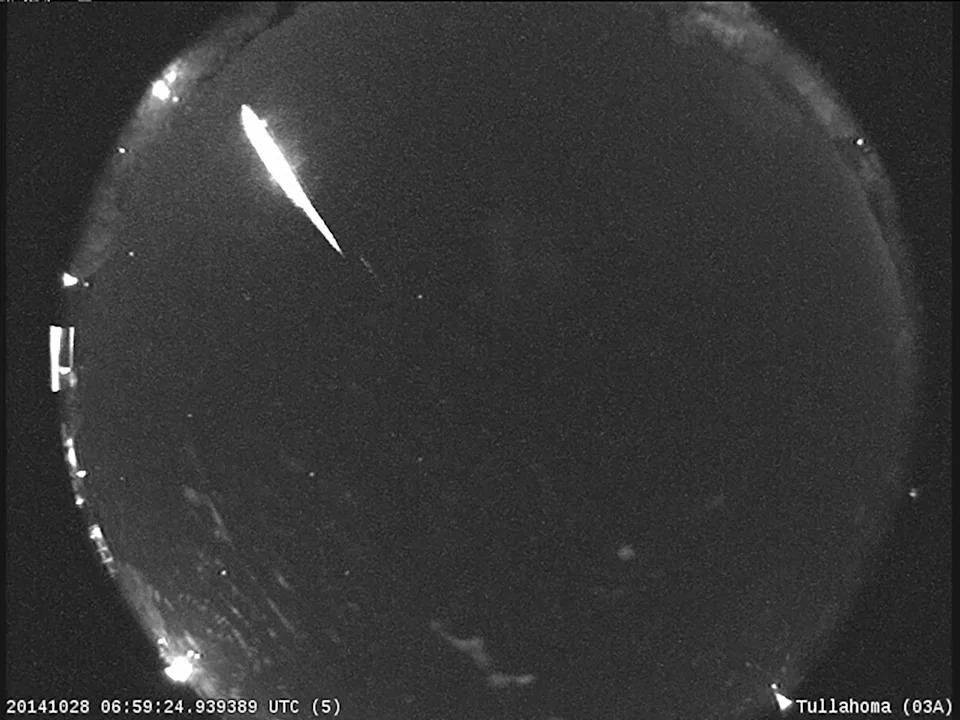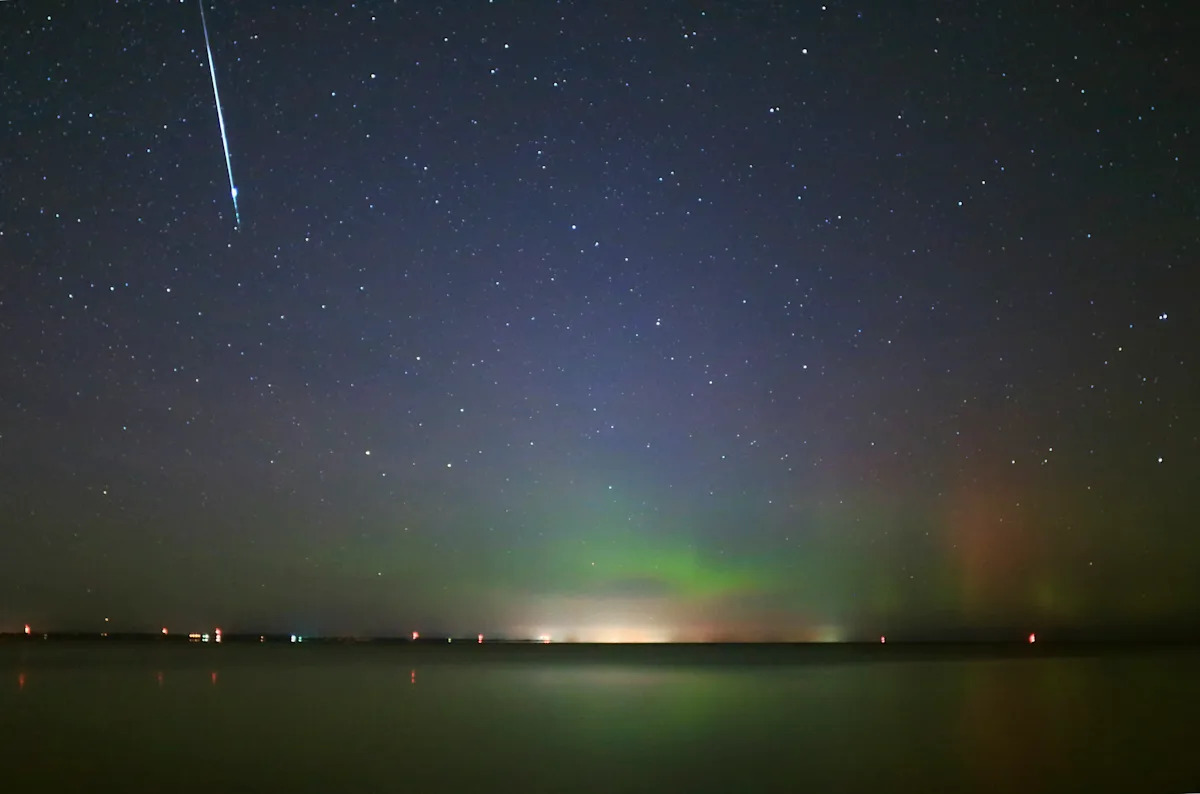A meteor shower often described as ‘Halloween Fireballs’ should light up the skies over the UK this week and into November.
The meteors are caused by a stream of debris left behind a comet, which intersects with our planet every year in autumn, with some causing spectacular fireballs.
But if you want to spot them, you’ll have to be patient – in contrast to other meteor showers, there are only a few Taurids per hour, but they tend to be brighter than regular meteor showers in our skies.
When can I see the Taurid meteor shower?
Every year, the Taurid meteor shower offers a slow-burning display that runs from late October into November, lasting longer than other meteor showers.

A 2014 image showing a Taurid fireball recorded at the NASA All Sky Fireball Network station in Tullahoma, Tenn. (NASA via AP)
This year, the Northern Taurids, visible from Britain, will be active between 20 October and 10 December, with a peak around 9 November, according to Earthsky — although the Taurids don’t have very definite peaks, unlike other showers.
The South Taurids’ predicted peak is around November 5 2025.
Both showers (separate streams of debris) produce around five meteors an hour, with around 10 per hour possible when they overlap.
Why do some Taurid meteors produce fireballs?
In previous years, such as 2015, the Taurid meteor shower has brought spectacular blazing fireballs in the sky.
These are produced by larger chunks of debris in the Taurid stream.
NASA said: “Fireballs and bolides are astronomical terms for exceptionally bright meteors that are spectacular enough to be seen over a very wide area.

Northern Taurids Meteor Shower over Oregon in the US. (PA)
“Ground-based observers sometimes also witness these events at night, or much more rarely in daylight, as impressive atmospheric light displays.”
It was previously believed that the Taurid meteor shower might harbour larger objects up to 1km in size, but a recent study suggested that a giant asteroid hiding among the Taurids is less likely.
“Our findings suggest that the risk of being hit by a large asteroid in the Taurid swarm is much lower than we believed, which is great news for planetary defence,” said astronomer Quanzhi Ye of the University of Maryland.
What causes the Taurid meteor shower?
The Taurid meteor shower (which appears to originate in the constellation Taurus, hence the name) is the remnants of Comet Encke.
Both Encke and the Taurids are believed to be remnants of a larger comet which disintegrated over a long period, between 20,000 and 30,000 years.
That object was previously believed to be up to 100 kilometers in diameter, but recent estimates suggest it was smaller, at around 10 kilometers.
The Taurids are relatively slow-moving (for comets), at around 65,000 miles per hour.
The stream of debris is split into two parts (Northern Taurids and Southern Taurids) and is spread out widely across the sky.
What’s the best way to see the Taurids?
The best time to see the Taurids is around midnight, according to EarthSky.
Royal Museums Greenwich advised: “Try to find somewhere with dark skies, an unobstructed horizon and very little light pollution. The Taurids are not particularly dramatic – so you could use this as a chance to familiarise yourself with the night sky. Perhaps you’ll catch a lucky shooting star while you’re out there.
“Make sure there are no direct sources of light in your eyes, so that you can fully adapt to the local conditions and ensure that fainter meteors become visible. There’s no advantage to using binoculars or a telescope; just look up with your own eyes to take in the widest possible view of the sky.”
